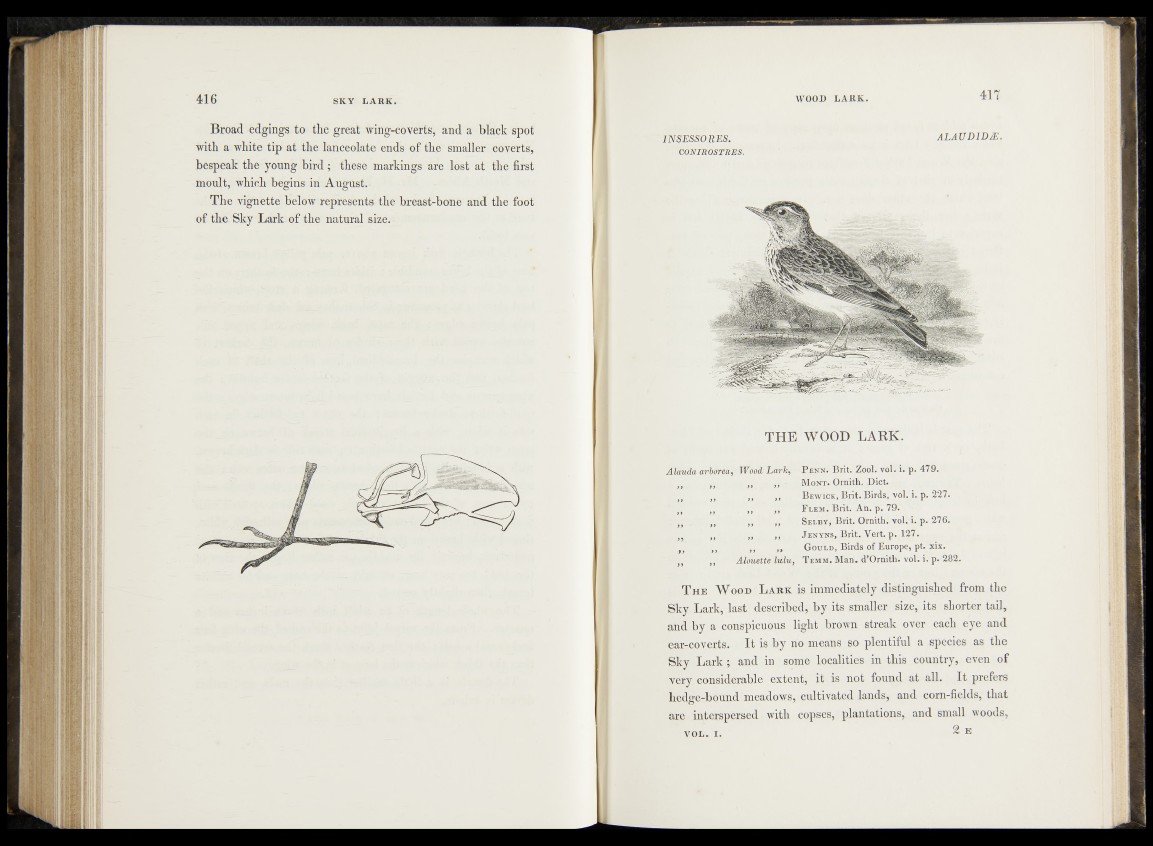
Broad edgings to the great wing-coverts, and a black spot
with a white tip at the lanceolate ends of the smaller coverts,
bespeak the young bird ; these markings are lost at the first
moult, which begins in August.
The vignette below represents the breast-bone and the foot
of the Sky Lark of the natural size..
1NSESSORES. ALAUD1DJE.
C ONIROSTRES.
TH E WOOD LARK.
Alauda arborea, Wood Lark, P enn. Brit. Zool. vol. i. p. 479.
M „ ,, ,, • Mont. Ornith. Diet.
M ,, ,, B ewick, Brit. Birds, vol. i. p. 227.
M „ ,, ,, F lem. Brit. An. p. 79.
t t ,, „ Selby, Brit. Ornith. vol. i. p. 276.
gL „ „ ,, J enyns, Brit. Yert. p. 127.
,, ,, „ Gould, Birds of Europe, pt. xix.
§| Jf Alouette lulu, T emm. Man. d’Ornith. vol. i. p. 282.
T he W ood L ark is immediately distinguished from the
Sky Lark, last described, by its smaller size, its shorter tail,
and by a conspicuous light brown streak over each eye and
ear-coverts. I t is by no means so plentiful a species as the
Sky L a rk ; and in some localities in this country, even of
very considerable extent, it is not found at all. I t prefers
hedge-bound meadows, cultivated lands, and corn-fields, that
are interspersed with copses, plantations, and small woods,
VOL. X. 2 E